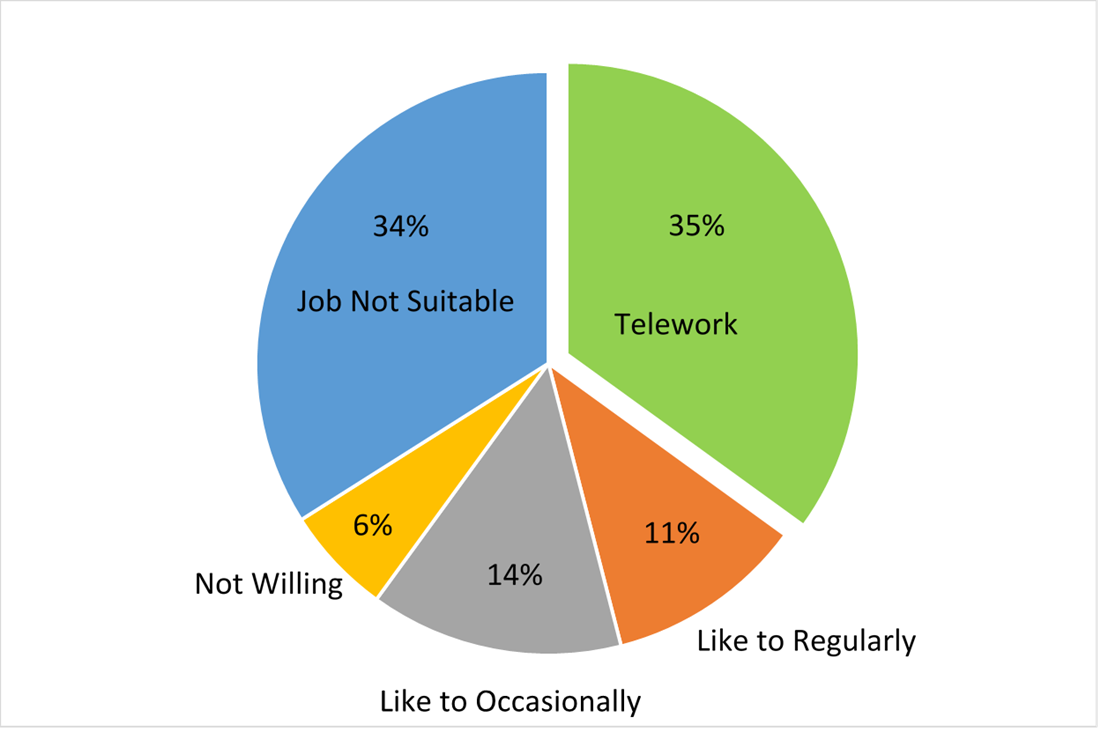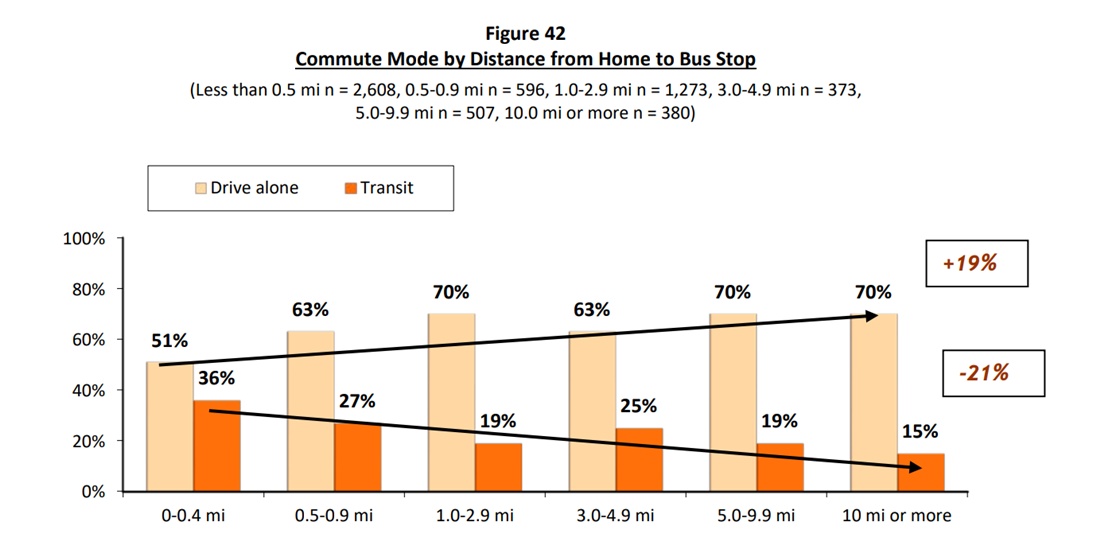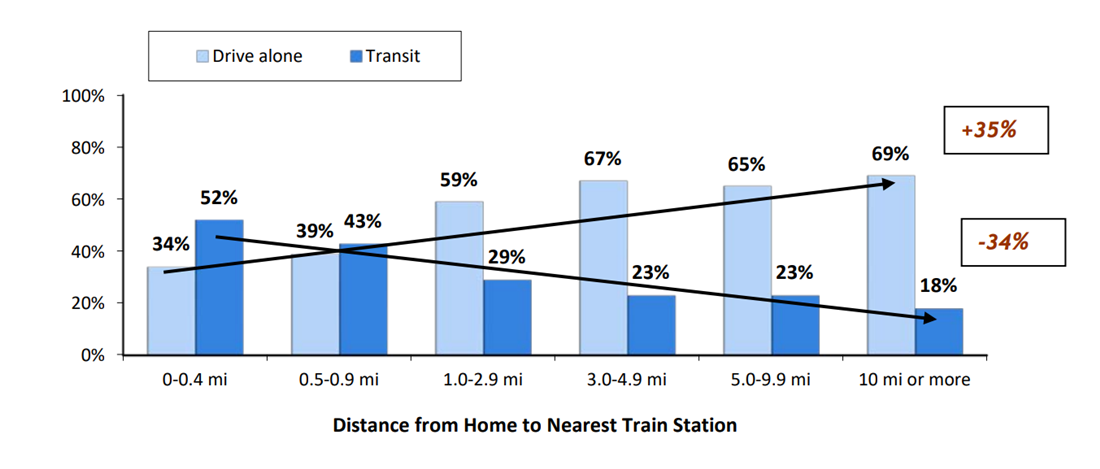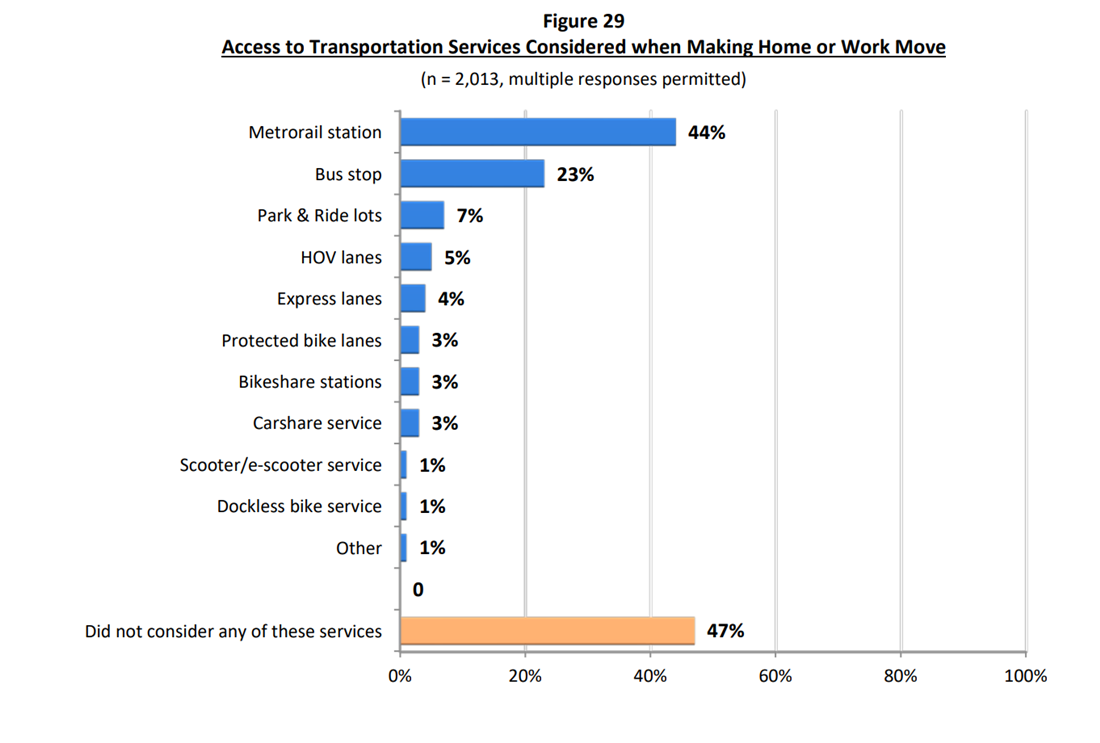Preliminary data from Commuter Connections’ triannual State of the Commute survey are out. Survey responses show how important it is for our region to provide its residents more options for commuting, and to support policies that focus on moving more people, not cars, throughout the region. The responses show that these efforts are working. And that the region needs to continue to support regional policies that support TPB Aspirational Initiatives like bringing jobs and housing closer together, encouraging people to use alternatives to driving alone, and providing more travel options for all people in the region.
Related: Learn about the TPB’s Aspirational Initiatives.
Here are a few takeaways from the survey:
First, fewer commuters are driving alone.
Driving alone continues to be the main way that most commuters choose to get to and from work each day. Regionally, about 58% of commuters report driving alone to work at least three days a week. But that’s a number that has fallen quite a bit since the first survey in 2001, when 7 in 10 commuters reported doing so. Why? There are more options and choices commuters can make that help them share a ride, take transit, bike, walk, or use a scooter. And that is only counting those who leave home to work. More on those telecommuters later.
Share of commuters who drive alone

Second, more workers are teleworking but still more want to.
More and more workers in the region are teleworking. It is important to note that when a worker decides to telework, they are effectively eliminating commute trips from the transportation system that would have occurred on the day(s) when they telework. In the latest survey, 35% of commuters reported working remotely or from home “at least occasionally.” That’s up from 27% in 2013. 775,000 commuters said they would like to telework if given the opportunity.
Commuters who telework

Gains in teleworking have spanned all sectors. The federal government, non-profits, and private firms have all seen big gains since the 2013 survey. The federal government continues to see the highest rates, though, with 48% of employees doing it at least occasionally.
There is a great potential for more people to telework in the region. If more people could work from home, there would be fewer cars on the roads and decreased congestion.
Third, where commuters live affects their commute choices.
Where you live influences how you choose to commute. The survey shows a strong correlation between a commuter’s home location, how close it is to a bus or train station and how likely they are to use transit. Basically, the closer you are to transit, the more likely you will use it. One of the TPB’s policy goals in its Aspirational Initiatives calls for bringing jobs and houses closer together in Activity Centers (places where you can live, work, and play) and places served by transit. And another calls for expanding bus and rapid transit throughout the region. These policies can help improve commuters’ ability to choose transit over driving alone.
The survey supports the belief that, in general, the closer you live to transit, the more likely you are to use it. Nearly 5 in 10 of the respondents said they live less than a mile from the nearest bus stop while only 17% lived less than a mile from a train station. But the relationships between the proximity to bus or the proximity to trains are quite different.
Just looking at access to the bus stops, only 36% of commuters who lived less than a half-mile from a bus stop primarily used transit to commute. As the distance from a bus stop increased, higher percentages of commuters drove alone for their commutes.

But for the people living close the train station, the percentage of people who commuted by train was much higher. 52% of people who lived within a half-mile of rail used transit compared to 34% of people driving alone. For both bus stops and train stations there was a clear relationship of distance from the stop and transit use, however the effect was more pronounced for the rail stations likely again because of their locations in the inner core of the region.

Similarly, commuters who had access to HOV and express toll lanes were also more likely to use them. Using HOV and Express lanes also influenced commuting behavior. Lanes that charge for driving alone but allow carpooling influences people choosing to share a ride. Although “drive alone” was the largest share (73%) among all Express Lane commuter travel (frequent & infrequent), the majority (75%) of those commuters who used Express Lanes 3 or more days a week used transit or car/vanpools. This also supports another TPB Aspirational Initiative to Expand Express the Highway Network. Express lanes reduce congestion by increasing prices at peak times. This approach can incentivize workers to commute in carpools and express buses, which can move more people using fewer vehicles during peak periods.
For people considering their access to transportation options when they moved or changed their working situation, access to Metrorail was a major factor for this group. When they were asked if they considered transportation services, like a Metrorail station, bus stop, bike lane, or HOV lane, when they changed their home or work, 43% said that they did consider their access to at least one of these services. And, 44% said that they considered access to a Metrorail station when deciding on the move.

These findings suggest that transportation policy decisions can make a big difference in people’s lives. The choices of where to place transportation services can influence the ways that people commute and where they may decide to live and work. These factors are important for figuring out the best ways to connect the region as a whole and help provide options for as many people as possible.
Get the full draft technical report.
The “State of the Commute” survey is conducted by Commuter Connections, a TPB program promoting commute modes other than driving alone. The survey asks approximately 6,000 area commuters about a broad range of topics, from commute patterns and commute satisfaction to awareness of Commuter Connections outreach and access to different transportation modes and alternative commute mode services. The survey has taken place every three years since 2001.